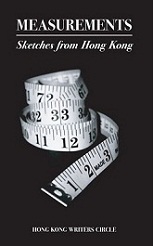|
by Alice Tsay
 
Mohammad A. Quayum, editor, A Rainbow Feast: New Asian Short Stories, Marshall Cavendish, 2010. 328 pgs.
Melanie Ho and S.S.C. Overton, editors, Measurements: Sketches from Hong Kong, Hong Kong Writers' Circle, 2010. 260 pgs.
A Rainbow Feast starts off with two friends meeting on a crisp Black Friday in New York and closes with a woman contemplating the ferry to Coronado Island in San Diego. Measurements, on the other hand, opens with a character contemplating Bruce Springsteen's lyrics while holding a used gun in his hand and ends with a woman who has moved to England with her children. You might never guess that the first is a collection subtitled New Asian Short Stories, the latter, Sketches from Hong Kong. In these two anthologies, that is part of the point. Mohammad A. Quayum, editor of A Rainbow Feast, argues in his Introduction that the complicated backgrounds of the contributors reflect "the itinerant nature of modern life, where people are moving freely across national borders in search of better opportunities." Similarly, Melanie Ho and S.C.C. Overton write in their Introduction that their collection reflects "the shrinking or expanding world as it is known to the people who reside in this most cosmopolitan of cities." Both collections use geography as a way of delimiting content while also purposely subverting geographical boundaries to reflect the instability and permeability of twenty-first century lives. This is rather sweeping, and in fact the stories themselves often focus on more primal, material themes. Unsurprisingly, eating features prominently in Measurements, including Jame DiBiasio's exploration of a man "going solo on Chinese food, that most sociable of cuisines" in "Seven Days to Go" and the series of stories whose titles begin with "All You Can Eat," Reena Bhojwani's "The Giant Within," Joy Al-Sofi's "Crystallised Ginger," Hermione Chan's "Caleb" and Adam Cheung's "The Night and the Past." There is much to consume and many ways to make consumption signify in Hong Kong, making these stories a microcosm of Measurements' larger project of assembling the dimensions of a city using the fragments each individual brings. Photographs, on the other hand, provide one of the thematic through-lines in A Rainbow Feast. Damyanti Ghosh's "Maya Niswas" is told from the perspective of a dead man who can move between the various photographs of him placed around the house. In Truong Tiep Truong's "The Cat that Slept on the Altar," a mysterious feline appears near a family altar filled with portraits of the ancestral dead. Linda Ty-Casper's "Celery, Tulips and Hummingbirds" explores the subtle forces exerted on a woman's life by the presence and absence of certain family photographs. The image becomes a figure of both alienation and connection, much as the existential snapshots provided in A Rainbow Feast simultaneously validate and undermine "Asian" as a collective term. While there is much to explore in the two dozen-odd voices brought together in each anthology, both Measurements and A Rainbow Feast reflect editorial and organizational choices that detract from what they could have been. Measurements, the outcome of a year's worth of work from the Hong Kong Writers' Circle, divides the pieces somewhat unsystematically into four sections: "Postcards to and from Hong Kong," "Memoirs and Essays," "Short Stories" and "Flash Fiction." Because the whole is not quite the equal of its parts, the drastic variance between pieces makes the structuring vision of collected "measurements" seems less a premise than an excuse. Individual pieces contribute further to the effect of random assemblage, the non-fictional mode of the "Memoirs and Essays" section in particular often being used as a space for the unfocused transcription rather than purposeful transformation of material drawn from everyday life. If Measurements could have benefited from a stronger editorial presence, the contributions of A Rainbow Feast often feel burdened by the intrusion of the paratext. All works are preceded by the biographies of the authors and the countries with which they identify. As a result, information about the contributors' teaching posts, writing awards, and previous publications compromises immediacy and access. Moreover, readers are automatically led to form preconceptions of individual pieces based on identifications like "Bangladesh/USA," "United Arab Emirates" or "India/Singapore." If the goal is to "help us understand each other's culture better and bring the nations closer," as Quayum writes in a highly defensive and even didactic Introduction, it might be better achieved by allowing the works of these emerging and established writers to have their say without external commentary that suggests their writing needs to be justified. "The novel tends to tell us everything," wrote V.S. Pritchett, "whereas the short story tells us only one thing, and that, intensely." In A Rainbow Feast and Measurements, the editors have attempted to compose a sketch from an array of "one things." Some achieve more intensity than others, among them Danielle Lowry's "Safekeeping" and Stephanie Dubois' "Luck" in Measurements and Suad Khatab Ali's "The Subjugated Ones" in A Rainbow Feast. These narratives twist to capture the light in new ways for their readers, suggesting ways in which a sense of place can infuse a work without weighing it down. |